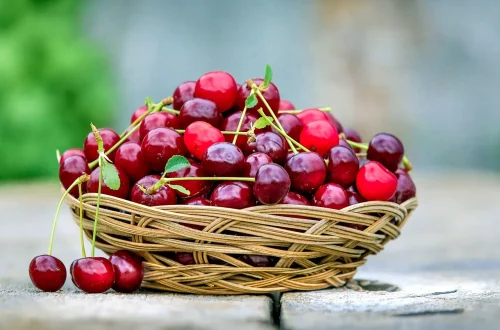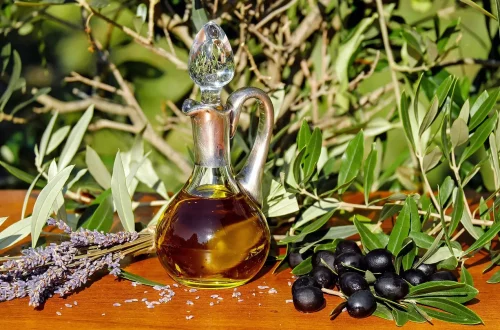
Discovering the Unique Flavor Profile of Shilajit: What to Expect
Shilajit is a natural substance that has captivated the attention of health enthusiasts and herbalists alike. Found primarily in the mountainous regions of the Himalayas, this sticky, tar-like resin is formed over centuries from the decomposition of plant material. Shilajit is rich in minerals, fulvic acid, and other bioactive compounds, giving it a unique profile that is both intriguing and beneficial. Its history is steeped in traditional medicine, where it has been revered for its potential health benefits, including its role as a rejuvenator and adaptogen.
As more people look for natural ways to enhance their health and well-being, the interest in Shilajit continues to grow. However, what often goes unnoticed is its complex flavor profile, which can be quite surprising. Unlike common supplements that often have little to no taste, Shilajit presents a distinct flavor experience that can be both earthy and slightly bitter. This complexity can vary depending on the source and processing of the resin, leading to a diverse range of sensory experiences. Understanding the flavor profile of Shilajit not only enhances the consumption experience but also provides insights into its quality and purity.
In this exploration, we will delve deeper into what to expect when tasting Shilajit, the sensory nuances that characterize its flavor, and how these elements may influence your perception of this ancient remedy.
Understanding the Composition of Shilajit
The flavor profile of Shilajit is deeply intertwined with its chemical composition. This natural resin is a treasure trove of minerals, including iron, calcium, magnesium, potassium, and zinc, along with a variety of organic compounds and bioactive substances. Each of these components plays a role in shaping the taste.
Fulvic acid, one of the primary constituents of Shilajit, is known for its earthy flavor. It is a natural organic acid that helps in the absorption of nutrients and minerals in the body. This characteristic can lend a somewhat bitter undertone to Shilajit, which is often described as being akin to dark chocolate or coffee. The presence of various trace minerals can also contribute to a metallic taste, which some users might find off-putting initially.
Additionally, Shilajit may contain different phytochemicals that can influence its flavor. For example, some samples may have floral or herbal notes due to the plant matter that contributes to its formation. The exact flavor can vary widely based on its geographical origin and the specific environmental conditions in which it was formed.
When considering the taste of Shilajit, it is important to remember that its unique flavor is also a marker of its authenticity. High-quality Shilajit, often sourced from higher altitudes, tends to have a more robust flavor profile compared to lower-grade products. Therefore, understanding its composition can enhance your appreciation of this complex substance and help you distinguish between high-quality and inferior versions.
The Experience of Tasting Shilajit
Tasting Shilajit for the first time can be quite an experience. The texture is thick and viscous, making it quite different from powders or capsules. When you take Shilajit, it often requires a bit of preparation. Many people prefer to dissolve it in warm water or tea, which not only makes it easier to consume but also helps to bring out its flavor nuances.
Upon tasting, the initial impression is usually a blend of earthy and slightly sweet notes, followed by a more pronounced bitterness that may linger on the palate. This bitterness is not unpleasant but rather adds depth to the overall flavor experience. Some users describe a warming sensation that accompanies the taste, which can be particularly comforting.
The flavor can also be influenced by the medium in which it is dissolved. For example, mixing Shilajit into herbal teas can infuse the drink with additional flavors, enhancing its overall profile. Some people might find that adding a bit of honey or lemon can help to balance the bitterness and create a more palatable experience.
Furthermore, the taste of Shilajit can evoke a sense of connection to nature, reflecting its origins in pristine mountain environments. This aspect of its flavor can be particularly appealing for those who value holistic and natural products. It emphasizes the idea that what we consume is not just about nutrition but also about the sensory experience and the story behind the ingredients.
How to Incorporate Shilajit into Your Daily Routine
Incorporating Shilajit into your daily routine can be a rewarding endeavor, not just for its potential health benefits but also for its unique taste. There are several ways to enjoy Shilajit, ensuring it seamlessly fits into your lifestyle while allowing you to appreciate its flavor.
One of the most common methods is to dissolve a small amount of Shilajit in warm water or herbal tea. This not only makes it easier to consume but also enhances the flavor, allowing you to experience its earthy undertones and subtle bitterness in a pleasant way. For those who enjoy smoothies, adding Shilajit to your blend can provide a nutrient boost while masking some of its stronger flavors with fruits and other ingredients.
Alternatively, some people prefer to take Shilajit directly, placing a small dollop under the tongue. This method provides a quicker absorption and a more intense flavor experience. It’s important to start with a small amount to gauge your personal taste preference, especially if you are not accustomed to its unique flavor profile.
For those who enjoy culinary adventures, using Shilajit in cooking can be an interesting option. Though it is not commonly used in traditional cooking, it can be added to sauces or broths, where its robust flavor can meld with other ingredients. However, care should be taken to avoid high heat, as excessive cooking may diminish its beneficial properties.
As you explore the different ways to enjoy Shilajit, pay attention to how its flavor interacts with other elements. This can enhance your appreciation of this ancient resin and its rich cultural significance.
The Cultural Significance of Shilajit
Shilajit is not just a supplement; it carries a rich cultural and historical significance that enhances its value. Revered in Ayurvedic medicine for centuries, it has been used as a powerful rejuvenating tonic. The cultural context in which Shilajit is consumed can provide insights into its flavor and how it is perceived by different communities.
In traditional practices, Shilajit is often associated with vitality and strength. It is believed to enhance energy levels, improve stamina, and support overall health. This perception contributes to the way it is consumed and the rituals surrounding its use. For many, taking Shilajit is more than just a health practice; it is a spiritual experience that connects them to their heritage and the natural world.
Moreover, the process of harvesting Shilajit is steeped in tradition. Local communities often have specific methods and rituals for collecting this precious resin, ensuring that it is done sustainably and respectfully. This connection to the land and its resources adds a layer of meaning to its flavor, as it reflects the environment and culture from which it originates.
Exploring the cultural significance of Shilajit can deepen your understanding of its flavor profile and the broader context in which it exists. It transforms the act of consumption into a holistic experience that encompasses history, tradition, and natural beauty.
In conclusion, Shilajit is a remarkable natural substance with a complex flavor profile that reflects its rich composition and cultural heritage. Whether you are new to this resin or a seasoned user, understanding its taste can enhance your appreciation of its qualities and the traditions that surround it.
**Disclaimer:** This article is for informational purposes only and should not be considered medical advice. Always consult a healthcare professional for health-related concerns or before starting any new supplement regimen.




